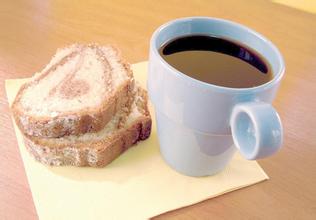Cuban Crystal Mountain Coffee Flavor Description Taste Characteristics Fine Coffee Beans Grind Processing Method Introduction
Cuban rum is a traditional drink of Cubans. Cuban rum is sugarcane soju made from sugar cane honey as raw material in white oak barrels by wine makers. after years of careful brewing, it has a unique and unparalleled taste. as a result, it has become a favorite drink for Cubans and has been widely welcomed in the international market. Rum is a natural product, which is made from sugar cane. The whole production process starts from the careful selection of raw materials, followed by the distillation of alcohol and the aging of sugarcane soju. The quality of rum is determined by the aging time, some for a year, some for decades. The ones on the market are usually three and seven years old, with an alcohol content of 38o4o, respectively. Heavy alcohols are removed in the production process, giving pleasant aromas to the wine.
The raw beans of Cubita coffee are selected from the pollution-free Crystal Mountain coffee beans in the high altitude area of Cuba. The particles of coffee beans are strictly selected according to the standard of sieve 17-19. The selected coffee beans have large particles and high maturity. Cubita coffee beans are all picked by hand, using water washing refining method to remove defective beans and other impurities to the maximum extent, coupled with the careful roasting of experienced roasters, it is rare to have the unique coffee beans in the world.
Cubita is the number one export brand of Cuban coffee, famous for its mellow and fragrant taste. Export markets are mainly Japan, France, Germany, Ireland, Canada, China and other countries. The cubita coffee entering the Chinese market is all selected from the pollution-free Crystal Mountain coffee beans in the high altitude areas of Cuba. It is a typical Caribbean coffee bean, refined by the traditional washing process.

Important Notice :
前街咖啡 FrontStreet Coffee has moved to new addredd:
FrontStreet Coffee Address: 315,Donghua East Road,GuangZhou
Tel:020 38364473
- Prev

Medium texture description of Peruvian Coffee Flavor method of Grinding of Fine Coffee beans in producing areas
Peru is located in western South America, with a coastline of 2254 kilometers. The Andes runs from north to south, and the mountains account for 1% of the country's area. it belongs to the tropical desert region with a dry and mild climate. Peruvian coffee is mostly grown at the foot of the Andes, where it is rich in traditional Central American top coffee beans. Peru is a huge and diverse land for them to produce a large number of different kinds.
- Next

Salvadoran Coffee processing method Fine Coffee Bean Grinding Flavor description roasting degree producing area
Many coffee lovers will not know the country of El Salvador, which is located in the north of Central America. It is bordered by Honduras to the north, the Pacific Ocean to the south, Guatemala to the west and northwest, and the Gulf of Fonseca in the Pacific to the east. The smallest and most populous country in Central America. The topography is mainly mountainous and plateau, with many volcanoes. Santa Ana active volcano is 2385 meters above sea level, which is the highest peak in the country.
Related
- Detailed explanation of Jadeite planting Land in Panamanian Jadeite Manor introduction to the grading system of Jadeite competitive bidding, Red bid, Green bid and Rose Summer
- Story of Coffee planting in Brenka region of Costa Rica Stonehenge Manor anaerobic heavy honey treatment of flavor mouth
- What's on the barrel of Blue Mountain Coffee beans?
- Can American coffee also pull flowers? How to use hot American style to pull out a good-looking pattern?
- Can you make a cold extract with coffee beans? What is the right proportion for cold-extracted coffee formula?
- Indonesian PWN Gold Mandrine Coffee Origin Features Flavor How to Chong? Mandolin coffee is American.
- A brief introduction to the flavor characteristics of Brazilian yellow bourbon coffee beans
- What is the effect of different water quality on the flavor of cold-extracted coffee? What kind of water is best for brewing coffee?
- Why do you think of Rose Summer whenever you mention Panamanian coffee?
- Introduction to the characteristics of authentic blue mountain coffee bean producing areas? What is the CIB Coffee Authority in Jamaica?

